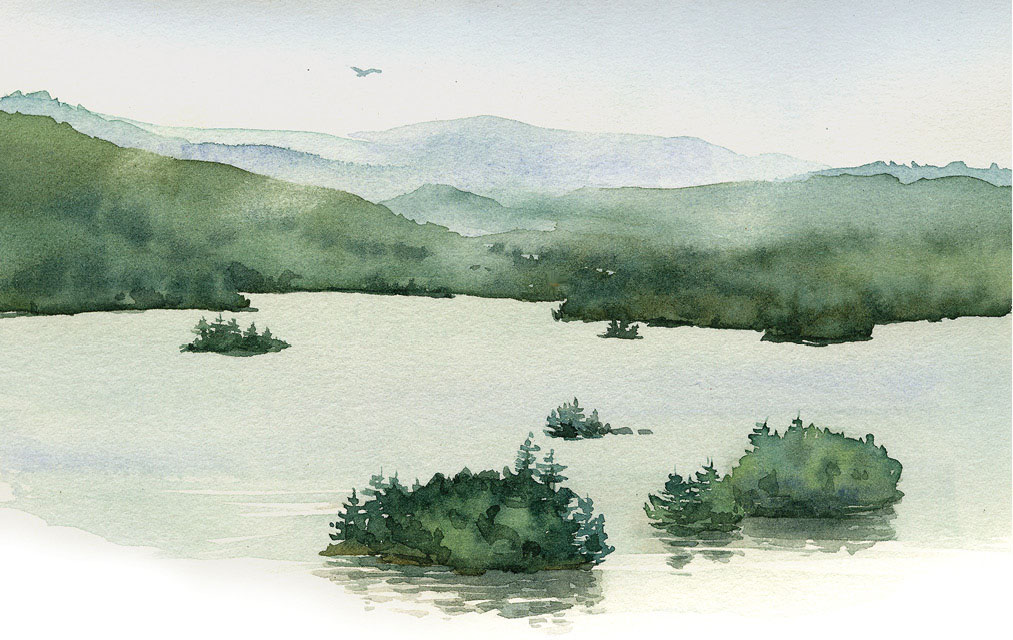
It might seem that this is the easiest type of water to paint, and perhaps it is. Still, there are some tips and things to watch out for. The way your body of water looks depends on a lot of factors. How far away are you? Close up, near a shoreline, in a still cove or on a pond, you’ll find reflections can play a big part in capturing the “look” of water and adding to the overall composition. At a distance, especially on a cloudy or rainy day, reflections may not be very visible if they show up at all (see image below).

ADIRONDACK LAKE
Watercolor on Fabriano hot-pressed watercolor paper
5" × 7" (13cm × 18cm)
This was painted from a window table in the Adirondack Museum’s café on a very rainy day. You can see the reflections of the nearest islands, but, in the distance, the lake appears almost featureless. I used a smooth wash for the water and the cloudy sky, lifting here and there in the sky to suggest the low clouds. In the water, I paid close attention to the reflections of the little islands. I painted them with a small round brush, letting my brush dance along the edge nearest the viewer to give the impression of reflections broken by wave action.
The colors used for the reflections were a lighter mixture of the ones used in the islands themselves, which were mainly Phthalo Blue and Burnt Sienna.

RED CANOE
Watercolor on Strathmore cold-pressed watercolor paper
9" × 12" (23cm × 30cm)
Notice, when painting a body of water like a pond, lake or even the ocean, that the distant water almost always looks flat and straight. Unless you’re trying to paint a wild storm in the ocean, as Winslow Homer often did, the horizon line (or the distant shoreline) should be level.
The shore or coves closer to you may have more shape to them, as you see in this painting of a red canoe on New York’s Lake Durant, but the water farthest away appears flat.